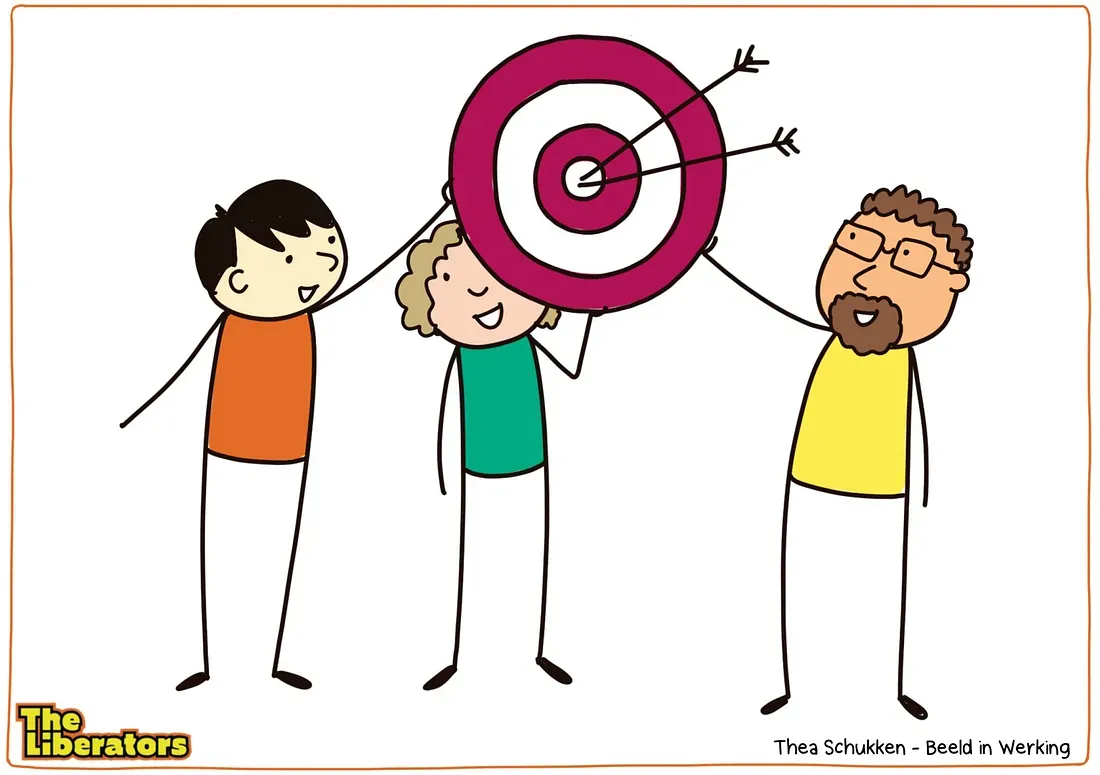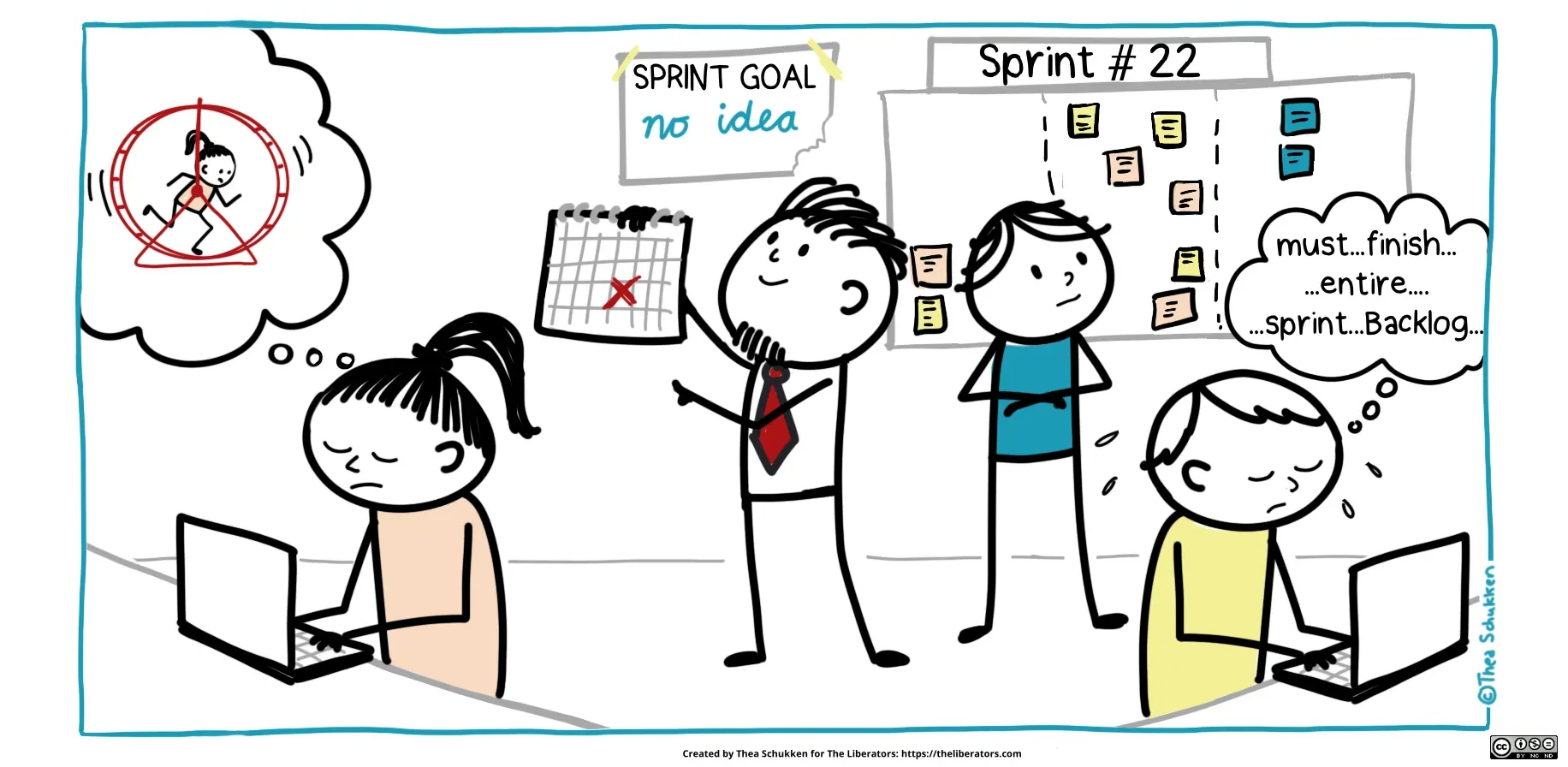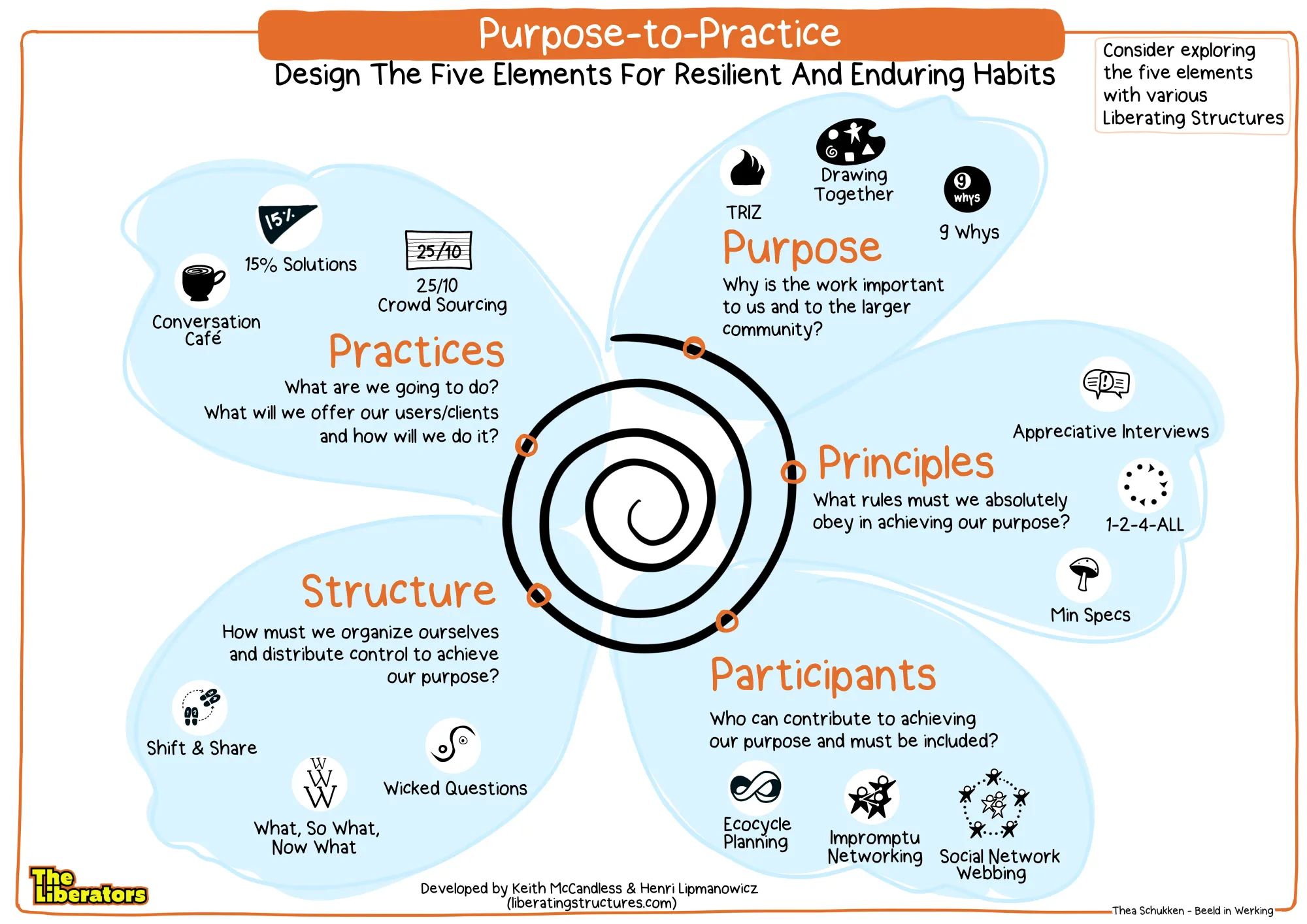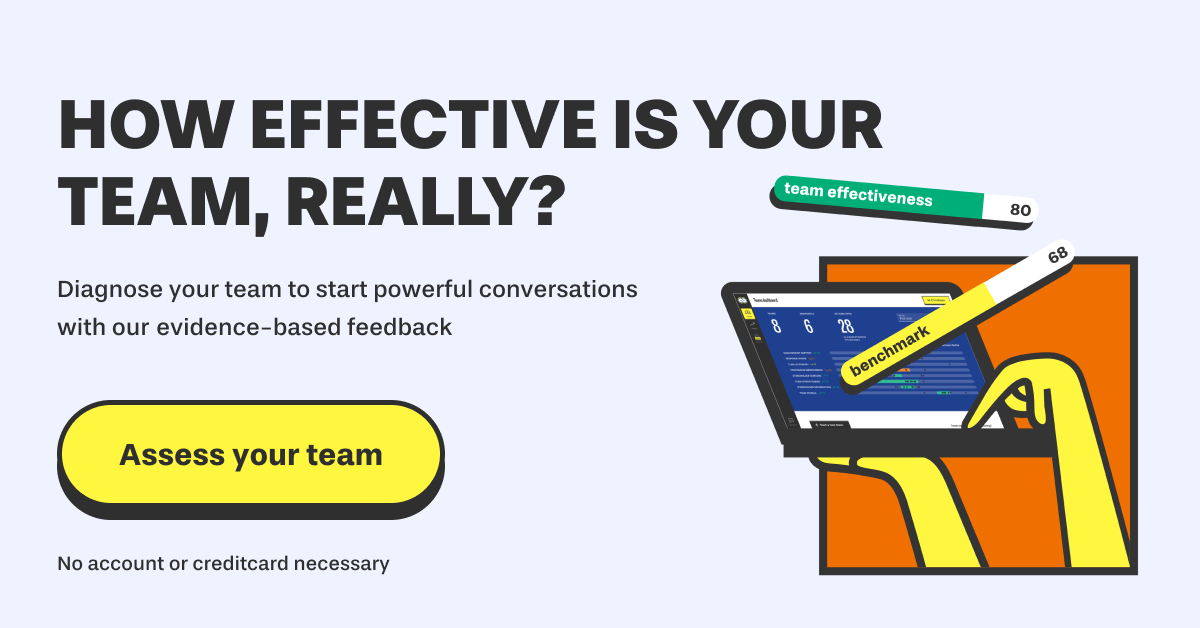Why Good Goals Create Great Teams
This post briefly overviews research on (team) goal commitment. We then offer three concrete actions you can take with your teams to improve goal commitment.

What makes excellent teamwork? If you’ve been a member of more than one team, you’ve probably noticed that the members of some teams put their motivation and energy together, but it feels more like “loose sand” in other teams. According to scientific studies, one critical factor that makes the difference is (team) goal commitment or the degree to which members feel committed to achieving the team's goals.
We are on a mission to unleash teams through an evidence-based approach. This post briefly overviews research on (team) goal commitment. We then offer three concrete actions you can take with your teams to improve goal commitment.
You can measure the quality of your teamgoals with Columinity. Go to teamworkquality.columinity.com to try now. Our free plan is great for individual teams, but with a paid plan you can track this factor - and many others - across many teams in the same or different organizations.
Overview of scientific research on goal commitment
Organizational psychologists have extensively studied goal commitment (see Locke & Latham, 2002). At its core, goal commitment is defined as “one’s determination to reach a goal” (Locke & Latham, 1990).
Interest in goal commitment grew in the 1950s and 1960s as it became evident that the command-and-control management style of the Industrial Revolution was ineffective for knowledge workers. This shift also paralleled a broader movement in psychology—from focusing primarily on mental disorders to embracing humanistic and positive psychology, which emphasizes motivation, self-actualization, and overall mental well-being (Morgan, 2006).

Edwin Locke and Gary Latham developed Goal-Setting Theory based on decades of research (Locke & Latham, 1990). They propose that people are most motivated by goals that are both challenging and attainable given their skills.
- Clear goals serve a directive function, helping individuals focus their time and effort.
- Ambitious (but realistic) goals provide an energizing function, generating motivation and engagement.
- Challenging (but not overwhelming) goals create a persistence function, encouraging people to stay committed even when difficulties arise.
Goal-Setting Theory is one of the most well-supported theories in organizational psychology. In their review, Locke & Latham (2002) found that “specific, difficult goals” improved performance across more than 100 tasks, involving over 40,000 participants in at least eight countries, across laboratory, simulation, and real-world settings. The overwhelming evidence confirms that clear, specific, and ambitious goals drive motivation and performance (see also Kanfer, Frese & Johnson, 2017).
This body of research influenced SMART goals, introduced by George Doran (1981), and inspired Management by Objectives (MBO), developed by Peter Drucker. Additionally, research shows that goal commitment within teams plays a crucial role in teamwork effectiveness (Klein et. al., 2001).
Now that we understand team goal commitment, how can we strengthen it? The strategies below have worked well for us, but every team is unique, and what works in one setting may not work in another. However, these approaches serve as a useful starting point for fostering stronger team commitment.

Despite the strong evidence that goals are motivating for teams, we observe in our with teams that remarkably few teams actually use goals at all. This also appears to be supported by harder data. Of the 10,000+ teams that have used our online diagnostic tool, “Shared Goals” receives an average rating of 64 on a scale from 1 to 100. There appears to be a lot of room for improvement. What we notice in teams is that goals are often missing altogether or are non-specific (e.g., “Finish all the work” or “Do X, Y, Z and B”). Goal Setting Theory helps us understand why such examples don’t help. Their goals don’t provide a directive function, an energizing function, or a persistence function. So, the net result is low teamwork quality, low overall productivity, and low motivation.
Strategy 1: Set clear goals together
The most effective strategy for improving the quality of goals is to set them collaboratively with your team. While this is an obvious strategy, many teams struggle with it when they lack sufficient autonomy. Team-level goals often have to fit into an overarching goal for the department, value stream, or product.
However, we’ve also noticed that many people think that goal setting is really complicated, but it isn’t all that hard. The only thing you’re trying to do as a team is answer the question: “What is our focus for this iteration, week or month?”. It can even be set daily if the work varies very frequently. The point is that a goal should bring a sense of direction and focus. A goal like “This week, we agree to deliver Feature A and prepare Feature B” is a fine goal. Similarly, “The aim this month is to reduce the number of support calls by 25%” is also fine.
Goals don’t need to cover all the work a team does. While there is great value in a laser focus, the nature of teamwork in most cases means that unpredictable stuff will pop up — like a bug or a support issue — that wasn’t anticipated when the goal was set. There may also be recurring work, like administration and invoicing. The point of goals is that they create a “decision moment” every time work that doesn’t align with the goal could be picked up. You can then decide not to do the work right now because it isn’t important enough — a decision you probably wouldn’t have taken without that goal.
Questions to test the quality of goals
We’ve found the following questions to be helpful to test if a goal meets the three functions of Goal Setting Theory:
- “Of all the activities that we normally do as a team, will this goal help us distinguish between those we should invest time in and those that aren’t important (right now)?”
- “Does this goal give us enough flexibility to be creative at the moment while giving us enough direction to avoid getting lost?”
- “Would we feel a sense of accomplishment as a team upon achieving this goal? Or is it too simple for us or too ambitious?”
- “Does this goal feel ambitious enough for our abilities as a team? Should we make it slightly more ambitious or dial back a bit?”
- WRITE: “For each person individually, does this goal provide you with a sense of shared purpose or direction?”
A simple goal-setting exercise to do with your team
The simplest way to set a collaborative goal is by using the Liberating Structures 1–2–4-ALLL and 15% Solutions. This “mini-string” starts with what’s on each team member’s mind and helps them think about how they can contribute to a shared goal.
A great time to run this exercise is right after reviewing the work completed in the current iteration (whether that’s a day, week, Sprint, month, etc.). Here’s how it works:
- (2 min) Individual Reflection: Each team member, in silence, lists activities they believe would be the best focus for the team in the next iteration.
- (4 min) Pair Sharing: Members form pairs, share their lists, and look for common themes or overlapping activities.
- (15 min) Group Discussion & Goal Setting: Each pair shares their insights with the whole team. If clear themes emerge, use them to co-create a goal using the format:
“In our next iteration, we will work together to … so that …”
If needed, the goal can include two sub-goals, but keeping it concise is best. If no strong themes arise, repeat steps 1 and 2 with the prompt: “What would make a great goal for us next iteration?” - (2 min) 15% Solutions – Individual Action: Each team member silently identifies one or more concrete steps they can take to contribute to the goal, leveraging their skills and abilities.
- (4 min) 15% Solutions – Small Group Sharing: In small groups (2-3 people), members share their steps and help refine them to be more actionable.
If this process feels challenging at first, don’t worry—it becomes easier as the team gets more comfortable thinking about goals rather than just tasks.
For long-term goal setting, consider using Ecocycle Planning, a Liberating Structure that helps teams reflect on past activities and identify areas that need improvement before setting future goals.
Strategy 2: Make goals visible
Collaboratively setting goals is valuable, but it’s not effective if those goals end up forgotten in a drawer or on a sticky note. To ensure goals fulfill the three key functions outlined in Goal Setting Theory, it’s important to keep them highly visible to the team. Here are a few ways to do that:
- Display the goal prominently, such as on a large banner in the team’s workspace.
- Begin each day with a quick check-in where team members share how they plan to contribute to the goal. Some teams also find it useful to reflect at the end of the day.
- When work arises that doesn’t align with the goal, gently prompt the team to reconsider. Ask, “What would happen if we stayed focused on the goal and tackled this later?”
- At the end of each iteration (whether a day, week, sprint, or other time frame), take time to reflect on how the team collaborated to move toward the goal.
Strategy 3: Redesign the team and its work
Even with these strategies, some teams still struggle to set goals that create a motivating and energizing environment—one where members stay engaged even when challenges arise. This often signals deeper structural issues in how teams and their work are organized:
- Lack of true teamwork: If everyone is focused solely on individual tasks with no cohesion or shared purpose, the group functions more like a collection of individuals rather than a team.
- No autonomy: In some organizations, teams receive work in such a rigid, pre-defined manner (e.g., tasks assigned by a manager) that they have little room to make their own decisions. This lack of ownership makes it difficult for team members to feel personally invested in the goals.
- Work that doesn’t require collaboration: Teamwork is most effective for complex tasks that demand multiple perspectives and skill sets. If the work doesn’t require collaboration, traditional team structures may not be the best fit.
If you see these patterns in your team(s), consider redesigning both the team structure and the nature of their work to improve goal commitment. A powerful approach we recommend is the Liberating Structure “Purpose to Practice”—a framework that actively involves team members in reshaping their work, increasing autonomy, and fostering true collaboration. For guidance on how to facilitate this process, check out this blog post.

Closing Words
Collaborative goal setting is a great way to create more motivating environments for teams. It is one of the ingredients of high-quality teamwork and high-performing teams. Despite the robust scientific evidence for the value of shared goals, many teams and organizations still don’t recognize their potential.
In this post, I provided a brief overview of scientific research on goals. More importantly, I provided three practical strategies to make better use of shared goals with your team. Give them a try and see how the quality of your teamwork will benefit from it.
You can measure the level of team composition autonomy for your team(s) with Columinity. Go to teamworkquality.columinity.com to try now. Our free plan is great for individual teams, but with a paid plan you can track this factor - and many others - across many teams in the same or different organizations.


